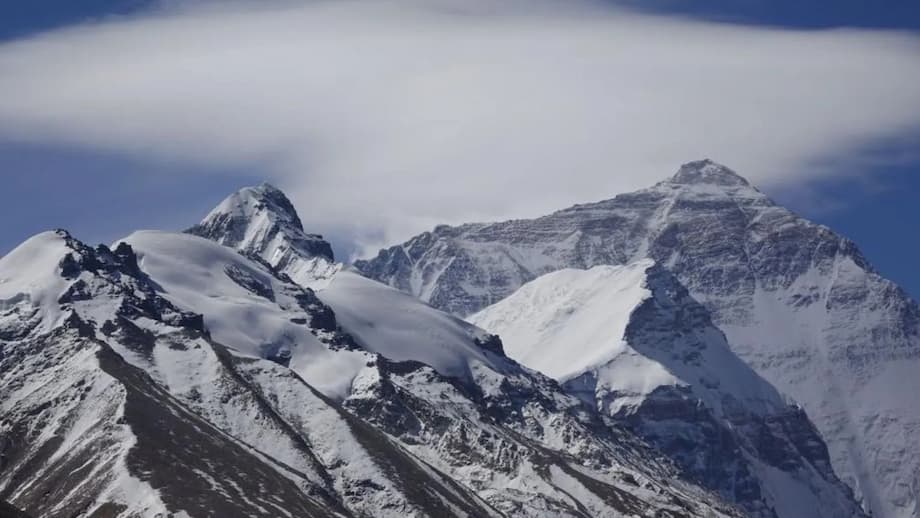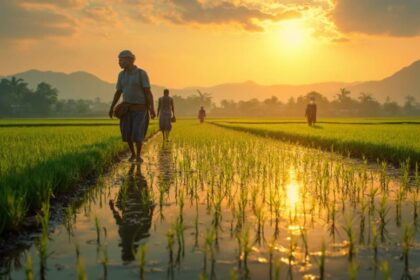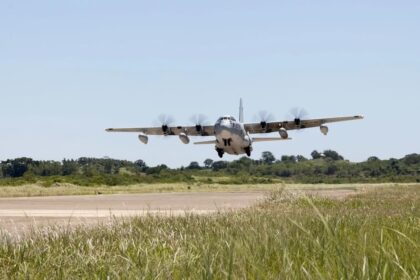A sudden whiteout in Karma Valley
A powerful snowstorm swept the eastern slopes of Mount Everest in Tibet, trapping hundreds of hikers in deep snow and bitter cold during a busy holiday week. The blizzard struck on Friday evening and intensified through Saturday, catching trekking groups on the Karma Valley trail as they sought views of Everest’s Kangshung face. Rescue teams and local villagers carved a route through drifts that reached about a meter in places, guiding exhausted trekkers down to Qudang township. Officials said they had established contact with all remaining groups, reported at least one death, and warned that the risk of hypothermia was high in the thin air and freezing temperatures.
The timing made conditions more dangerous. October usually offers clear skies and manageable temperatures across the Himalayan foothills. This year, an abrupt turn in the weather brought lightning, driving sleet, and heavy wet snow at elevations above 4,000 meters. Hikers described tents buckling under the constant weight of snowfall and trails that turned to ice. Many decided to retreat after only a few hours on the trail, moving slowly to avoid slips on steep sections while wind pushed snow across the path and visibility fell to a few meters.
Hundreds of villagers and trained rescuers deployed across the valley to clear the route. The area sits above 4,900 meters at its highest points near the trail corridors, where even light work strains the lungs. Teams used shovels and brute force to punch through drifts that sealed narrow sections of the track. Trekkers who made it to Qudang described hot food, basic medical checks, and improvised power from generators as the community absorbed evacuees.
By Sunday, officials reported that about 350 people had reached safety in Qudang. The final stage of evacuations continued into Tuesday, and by mid week local authorities said the flow of people into Qudang and nearby parts of Dingri county included hundreds more. Official briefings cited totals of about 580 hikers guided out of the valley, along with more than 300 local guides and yak herders who had been trapped with them. Access to the Everest Scenic Area was suspended until conditions improved.
The sweeping rescue unfolded as storms pounded the region on both sides of the border. In Nepal, heavy rain triggered landslides and floods that killed dozens and destroyed vital bridges and roads. The Himalayan weather pattern that usually eases by early October delivered a different picture this year, spreading hazards across a wide area and complicating rescue planning.
Where hikers were caught and why October turned dangerous
The Karma Valley is a remote corridor leading toward the eastern face of Everest. It is a striking landscape of glacial moraines, steep gullies, and high ridges that funnel wind and cloud. Trekkers come for wide views of the world’s highest peak, then return to lower altitudes to sleep. The route is popular during China’s National Day holiday, known as Golden Week, when travel across the country surges and alpine trails see heavy foot traffic.
Karma Valley and the Kangshung face
Unlike the crowded approach to Everest’s north face, which benefits from road access, the Karma Valley demands stout legs and careful pacing. The trail’s average elevation sits around 4,200 meters, where the partial pressure of oxygen is roughly two thirds of that at sea level. Walking with a backpack at that altitude is slow work even on clear days. When fresh snow stacks up quickly, the effort increases sharply and turnaround decisions become life saving.
October usually brings stable skies
October is often considered a prime window for Himalayan hiking after the summer monsoon weakens. Skies tend to clear and daytime temperatures can be forgiving compared with winter. Many hikers plan trips in early October to catch this window. This year, an active weather system dropped temperatures and pulled moisture into the valleys. The result was heavy snowfall at elevations where trekkers commonly camp. Wet snow clung to tents, collapsed guy lines, and buried trail markers.
Voices from the mountain
First hand accounts from trekkers convey the speed and severity of the storm. Many had experience in alpine conditions and still found the snowfall and wind beyond anything they had faced in October.
Nature photographer Dong Shuchang had set out to capture views from the Tibetan slopes when the weather turned severe just hours into his trek. He described loud thunder, constant lightning, and snow that kept him awake through the night.
The lightning and thunderstorms would not stop. The snowfall was so heavy I could hardly sleep.
He said his group reached around 4,600 meters before retreating, soaked through despite rain jackets and windbreakers. Several people in his party showed signs of hypothermia as they descended slowly toward lower ground.
Our windbreakers and raincoats were no match for the snow. We were all drenched.
Dong recalled slipping again and again on ice as sleet mixed with wet snow. Rescue teams and villagers passed him heading uphill, and later that night he shared a cramped room in Qudang, relying on generator power until the storm eased.
Everyone was moving slowly. The route was very slippery. I kept falling because of the ice.
Chen Geshuang, part of an experienced trekking team, said the group started its retreat once snow reached about a meter where they had camped. She emphasized that training and fitness did not erase the risk.
All of us are experienced hikers. This blizzard was still extremely difficult to deal with. I was so lucky to get out.
One woman, whose husband was stuck in the mountains, described the anxiety of waiting as rescuers cleared the trail section by section.
Even for rescuers, it is not easy, they need to clear snow to make a path. I hope my husband’s team reaches the rescue team safely.
Eric Wen, who trekked out through heavy drifts, said fatigue and cold represented a constant threat when tents filled with snow during the night.
We had to clear the snow every 10 minutes. Otherwise our tents would have collapsed.
Inside the rescue
Local governments mobilized villagers, firefighters, and specialized teams to reach stranded groups on foot. At those elevations, machine access is limited and fresh snowfall blocks narrow lanes. People worked with shovels, snow saws, and poles to reopen the route. Yaks and horses helped break trail and move supplies. Evacuees were guided to rest points where they received hot drinks and basic medical checks, then moved to Qudang and nearby settlements in Dingri county for shelter.
Officials reported that more than 350 people had been led out by Sunday. The remaining trekkers were brought down in stages over the next two days as the snow settled and the risk of fresh slides eased. Many evacuees spent nights in simple rooms powered by generators while crews worked to clear access roads. Entry to the Mount Everest Scenic Area was suspended, and ticket sales were paused until further notice. Authorities said they would organize safe travel out of the region for those who had completed health checks.
Why helicopters were limited
Helicopter rescues at very high altitude are difficult even in clear weather. Thin air reduces lift, mountain winds shift rapidly, and visibility can fall to near zero in blowing snow. Severe conditions over the weekend limited flight operations. Ground teams became the backbone of the evacuation, moving slowly but steadily as new paths were cut through the drifts. Many hikers followed footprints made by earlier groups, a simple but effective tactic that helped them link up with rescuers.
Rescue teams carried food, blankets, oxygen, and basic medicines. Trekkers who had suffered exposure were warmed, hydrated, and monitored for altitude sickness. Gear checks prioritized wet clothing and broken tent poles. Where possible, officials moved groups by bus from local staging points after they reached cleared roads.
Why did October turn dangerous
Several factors can turn a pleasant early autumn trek into a hazardous whiteout. Meteorologists tracking the storm pointed to a low pressure system that kept the late monsoon active over the Himalayas. Moisture from the Bay of Bengal surged north into colder air over high valleys. At altitude, that moisture fell as heavy snow. The mix of rain at lower levels and snow higher up is common during transitional seasons, but the volume and timing were unusual for early October.
Climate trends add complexity. Scientists monitoring the Tibetan Plateau have documented warmer winters and shifts in monsoon timing. When the average snow line rises over time, snowfall can arrive in more erratic bursts, sometimes later than expected. That does not mean every storm is caused by climate change. It means that background conditions can tilt the odds toward more volatile weather. Trekkers plan based on historical patterns, but those patterns are changing, which makes a single forecast less reliable for an entire week.
In practical terms, groups that studied an early week forecast saw a favorable window. Conditions changed quickly, and by the time the snow began in earnest on Friday evening, many camps were already in place at high elevations. Once tent platforms were buried and trail markers disappeared, retreat became slow and exhausting, especially for teams without dedicated breaking crews to open a path.
Tourism boom and mountain risk
The Everest region on the Tibetan side has seen steady investment in visitor infrastructure, including an observation deck, a monastery site, and access points spread across valleys and peaks. Official figures said the Mount Everest Scenic Area received a record 540,200 visitors in 2024. Most visitors are not summit climbers. They come for the landscape and the thin air. In 2024, nearly 1,000 people reached the summit of Everest, the vast majority from the Nepal side. On the Tibetan side, road access to the north face draws large tour groups during peak seasons.
Golden Week concentrates demand. The eight day holiday that began on October 1 sent travelers across China in large numbers. Karma Valley drew crowds looking for a quieter approach to Everest’s eastern face. Once the snow began, that crowding created a rescue challenge. Coordinators had to track many small groups and confirm each team’s location. Outdoor enthusiasts debated safety protocols on social media, including whether stranded hikers should pay some rescue costs. Local agencies focused on clearing the route and getting people to shelter, then planned an orderly return home for evacuees.
Mountain rescue planners track more than headcounts. They evaluate the mix of first time trekkers, experienced hikers, and professional guides on the trail. They weigh communications coverage, trail width, and the ease of reaching staging points by road. In this case, the episodes of thunder, sleet, and lightning increased the risk of exposure, while deep snow limited movement. All of that slowed the pace of evacuation despite the large number of people on the trail.
Safety at altitude
Two dangers rose quickly during the storm: hypothermia and altitude illness. Hypothermia sets in when body temperature drops, often after clothing becomes soaked and wind strips heat from the skin. Early signs include shivering, slurred speech, and reduced coordination. At altitude, hypothermia can arrive quickly because the air is cold and dry, and the body is already working harder to oxygenate blood. Heat loss accelerates when snow loads tents and people spend long periods immobile.
Acute mountain sickness can affect trekkers above 2,500 meters, with risks increasing as elevation climbs. Symptoms include headache, nausea, loss of appetite, and trouble sleeping. The safest response is to stop ascending. If symptoms worsen, descending even a few hundred meters helps. During this storm, some hikers reported a mix of fatigue, cold stress, and altitude symptoms as they trudged through deep snow. Rest stops and warm fluid intake reduced risk while they waited for escort teams to arrive.
Seasoned climbers often repeat some basic advice: travel with a reliable communication device, monitor changing forecasts, and identify safe zones away from slopes that can release avalanches. An experienced mountaineer advising trekkers this week urged people to alert local authorities to their position, remain clear of avalanche terrain, and carry a satellite phone or tracker in case mobile signals drop. Groups also stressed the value of extra insulating layers and dry socks stored in waterproof bags, along with sturdy shovels to manage tent platforms when snow begins to pile up fast.
Across the Himalayas
The weekend storm did not stop at the border. In Nepal, days of heavy rain brought landslides and flash floods that killed at least 47 people, washed away bridges, and cut off road links. Villages in eastern districts faced evacuations while emergency crews tried to reopen highways. Alpine teams on nearby peaks, including Cho Oyu, faced fresh snow measured at more than a meter on wind loaded slopes. Many expeditions paused movement while they assessed stability.
Farther north and west in China, storms stranded hikers in the Qilian Mountains. One person died of hypothermia and altitude sickness before crews reached the group, according to official reports. Police and rescue teams evacuated more than two hundred others and closed popular hiking and camping areas temporarily. Trailheads in other scenic districts were shut while the weather passed and roads were cleared.
What happens next for the Everest region
With many evacuees sheltered and health checks underway, local officials turned to reopening plans. Clearing crews continue to work along the Karma Valley approach to reduce snow hazards and repair trail damage. Forecasts called for drier conditions and clearer skies in the days ahead. Authorities kept the scenic area closed while they evaluated slope stability and prepared to escort remaining teams out. Transport companies organized buses to move trekkers from Qudang and nearby towns to larger hubs once roads reopened.
The larger conversation will focus on preparedness and communication. Visitor numbers are rising, and seasonal patterns are shifting. Guides and local agencies are likely to push for stronger early warning protocols, better crowd management during major holidays, and consistent requirements for communications gear. The storm highlighted the value of local knowledge, from villagers breaking trail with yaks to guides who know safe shelters along the route. Those lessons will shape how the region balances access with safety in the coming seasons.
The Bottom Line
- A heavy snowstorm trapped hundreds of hikers on the Tibetan side of Mount Everest during Golden Week
- About 350 people reached Qudang by Sunday, and officials said the final groups were evacuated in stages by Tuesday
- Authorities reported at least one death and warned of hypothermia risks in deep snow and thin air
- Local teams relied on ground evacuations as weather limited helicopter operations and visibility
- The Everest Scenic Area was closed while crews cleared snow and assessed trail safety
- Meteorologists pointed to a persistent low pressure pattern that kept monsoon moisture active into October
- Tourism has surged, with 540,200 visitors to the Everest Scenic Area in 2024, raising crowd management challenges
- Storm impacts extended across the Himalayas, with at least 47 deaths from floods and landslides in Nepal












